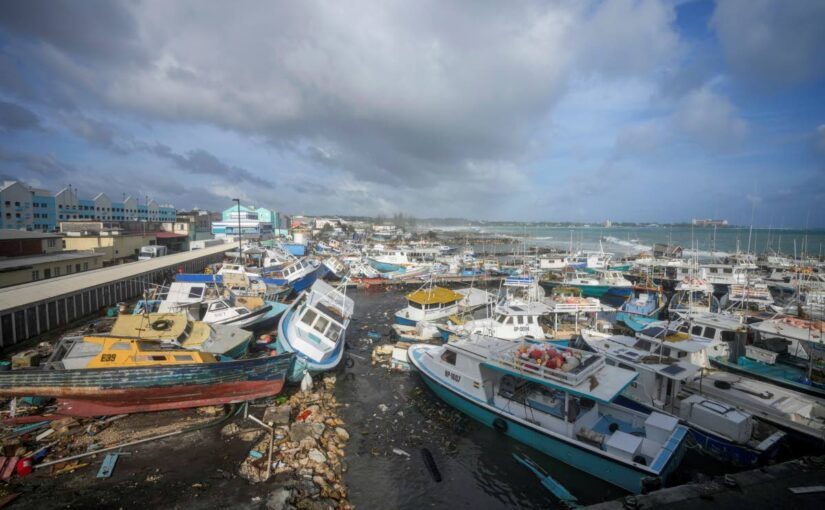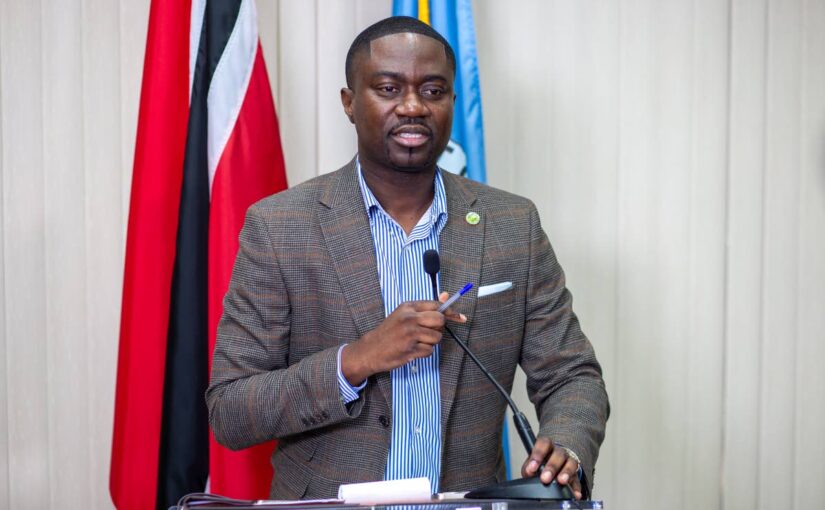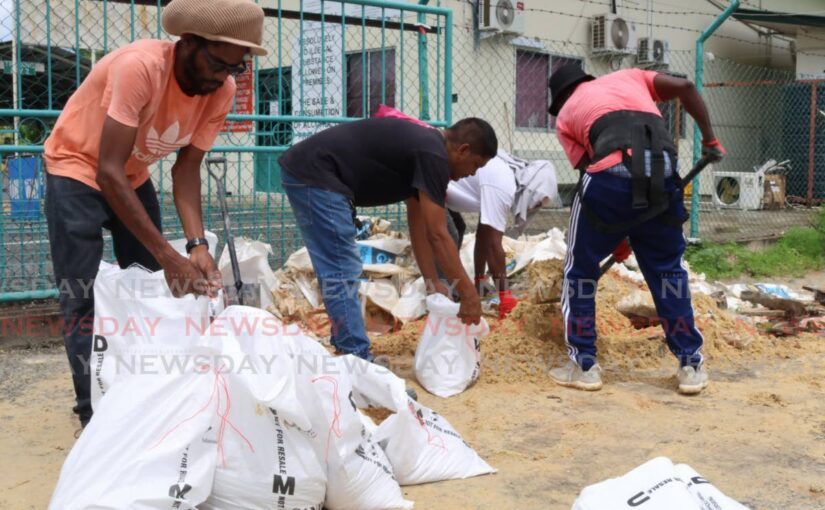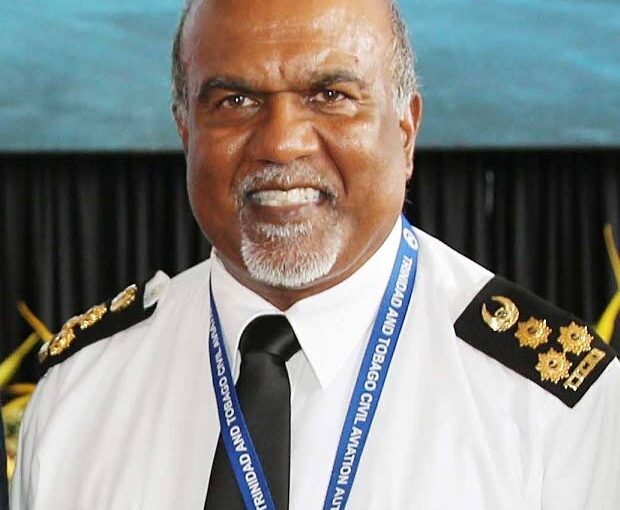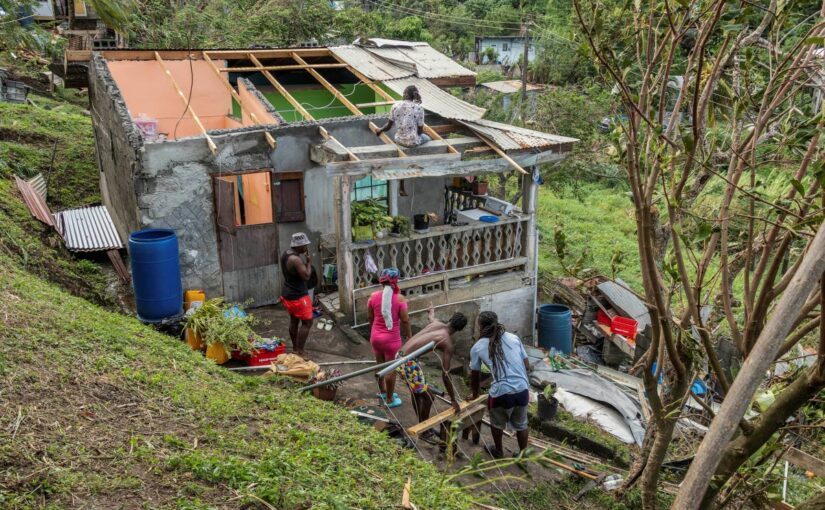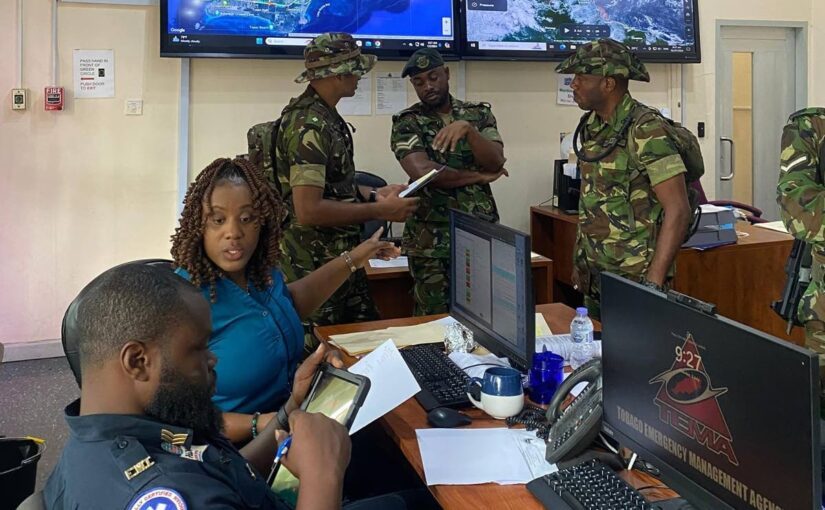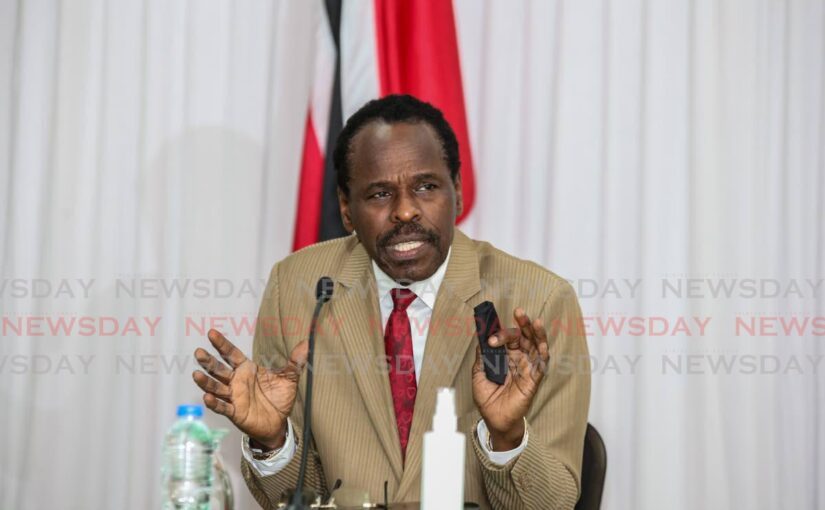THE Tobago Emergency Management Agency (TEMA) warned on June 30 that the island would more than likely require international help to rehabilitate...
Vous n'êtes pas connecté
- English
- Français
- عربي
- Español
- Deutsch
- Português
- русский язык
- Català
- Italiano
- Nederlands, Vlaams
- Norsk
- فارسی
- বাংলা
- اردو
- Azərbaycan dili
- Bahasa Indonesia
- Հայերեն
- Ελληνικά
- Bosanski jezik
- українська мова
- Íslenska
- Türkmen, Түркмен
- Türkçe
- Shqip
- Eesti keel
- magyar
- Қазақ тілі
- Kalaallisut ; kalaallit oqaasii
- Lietuvių kalba
- Latviešu valoda
- македонски јазик
- Монгол
- Bahasa Melayu ; بهاس ملايو
- ဗမာစာ
- Slovenščina
- тоҷикӣ ; toğikī ; تاجیکی
- ไทย
- O'zbek ; Ўзбек ; أۇزبېك
- Tiếng Việt
- ភាសាខ្មែរ
- རྫོང་ཁ
- Soomaaliga ; af Soomaali
Rubriques :
 Maroc - NEWSDAY.CO.TT - A la Une - 04/Jul 06:27
Maroc - NEWSDAY.CO.TT - A la Une - 04/Jul 06:27
Hurricanes and climate change
Dr Anjani Ganase reflects on the effects of devastating hurricanes on human communities and wonders if we can adapt before catastrophes force change “I remember Flora. I was 12 years old. Schools were dismissed early. But my father still was not able to pick us up until the usual time. We went from Port of Spain through Maraval and into Santa Cruz on roads without traffic – everyone was home already. The sky was grey and the streets slippery with driving rain. It was my earliest remembered experience of howling wind and bending trees. "This impression of powerful nature has never left me; and Trinidad was on the periphery of Flora. I learned of the devastation to Tobago, the destruction of the cocoa plantations and the people who died, only after I was old enough to find out.” My mother’s memory of Flora is vivid and forceful. I have lived in proximity to hurricanes all my life, though I have never felt the full force. I’ve only heard of the eye of the hurricane, but never seen it. I witnessed the whipping tail winds of Hurricane Ivan as it moved north of Trinidad in 2004, seeing it part trees in the valley like a comb. I was in Florida when Hurricane Wilma dumped water on us for two days. I was still on the outskirts of destruction. There was a lot of flooding, but somehow Walmart remained open for the desperate and ill-prepared college student. There is a level of anxiety associated with the oncoming hurricane, hour by hour, play by play in the match up of humans and nature. Is it going to weave south? Is it getting stronger? As I write this, Hurricane Beryl passes north of Tobago and barrels towards Grenada and St Vincent and the Grenadines, to make landfall four hours later at Carriacou. With communication at our fingertips, the projections of the path for Beryl are known for two days. She reaches us with high winds and roaring seas, leaves Tobago and Barbados, St Vincent and the Grenadines without power, houses without roofs, felled trees, beached boats and rubble everywhere. I can only imagine the terror of those who were expecting the full brunt of a category 4 hurricane. As part of my research and practice, I have investigated the impacts of hurricanes on coral reefs. The tropical east coast of Australia, where the Great Barrier Reef (GBR) lies, is regularly exposed to cyclones. I was part of a team sent to investigate the extent of damage caused by Cyclone Ita in 2014. Cyclone Ita was a category 4 when it made landfall along the GBR. The reefs in the path of destruction were churned over, corals reduced to rubble with large chunks of the reef thrown up on the reef by powerful waves. The turbulent waves scoured and scraped the corals off the seabed and reef life was gone. What do we know about cyclone trends and global warming? Hurricanes and typhoons, which are regional names, are all essentially tropical cyclones. While human activities have influenced the recent and rapid increase in global temperatures, the direct effect to changes in hurricane seasons, frequency and intensity is still unclear to scientists. [caption id="attachment_1094091" align="alignnone" width="1024"] Fishermen pull a boat damaged by Hurricane Beryl back to the dock at the Bridgetown Fisheries in Barbados on July 1. - AP Photo[/caption] There are so many factors that influence hurricanes and so many dynamics – formation, trajectory – remain unpredictable. Scientists have modelled changes in hurricane intensities, frequencies and amplified rainfall with climate projections and found that warming conditions are likely to increase hurricane wind and rainfall owing to greater evaporation and cloud storage of water vapour. What this likely translates to is a higher proportion of category 4 and 5 storms (estimated at 25-35 per cent increase), and greater associated rainfall. Less clear is the frequency of hurricanes, as the number may remain consistent or even decline with a warmer future. There are many other factors that likely influence hurricane events, such as the changes in the aerosols in the atmosphere; in recent times, volcanic eruptions and the presence of Sahara dust are to be considered. The biggest concern to scientists may be the combined impacts of more severe hurricanes and sea-level rise. Humans have increased the rate of sea-level rise since the 1970s. As a result, hurricanes are more likely to result in more severe coastal inundation and damage. With heavier rainfall, floods and landslips will increase in severity, increasing the risk to coastal communities and low-lying areas. What can we do? Trinidad hugs the coast of Venezuela and is mostly spared as hurricanes swing up into the Caribbean Sea away from the South American continental shelf. Meanwhile, Tobago is often clipped along its northeast. Other places in the Caribbean – the Yucatan Peninsula, Florida, Bahamas and the northern section of the Lesser Antilles – seem to be the hurricane hotspots for the region. Over the 160 years of storms tracked for the Caribbean region, Tobago has experienced ten hurricanes and 35 tropical storms within 60 km of its coast. Miami Florida has experienced 24 hurricanes (and some 50 tropical storms) over the same time. While we can prepare for the short term with respect to property safety and food security, there is only so much one can do against a category 5 hurricane capable of snapping trees and taking the roofs off even the most well-built homes. Preparedness at the community and national levels is key to long-term adaptation. If we consider the economic loss to hurricane damage, it surely justifies the need for medium- to long-term programmes in hurricane adaptation. The most obvious is adapting building and infrastructure design of homes not only to withstand more intense hurricanes but also allow functionality in the aftermath with respect to energy generation and water supply. [caption id="attachment_1094088" align="alignnone" width="1024"] Hurricane Ivan. NOAA/NESDIS/Environmental Visualization ProgramPhoto courtesy: Tim Loomis -[/caption] Think about water drainage to prevent flooding, but also water capture for drinking supply during the recovery phase. This must be closely tied to community and city planning. Where do all the drains lead? It cannot be that one property that can afford a retaining wall causes downstream erosion of other properties. Development designs must be cohesive and suitable for all income groups. There needs to be collaboration between government, business owners and residents. Strategies in nature-based solutions are essential for adaptable flood and coastal-erosion management, not to mention adding a natural aesthetic as an alternative to the concrete solution. Finally, we need programmes for recovery and rebuilding that enhance adaptations rather than repeating past mistakes hoping for a different outcome. Adaptation is not a new concept. In 1974, Cyclone Tracy hit Darwin, Australia, on Christmas Day, destroying the town and killing 66 people. This cyclone called for a revamp of Australia’s building code and standards. Hurricane Flora devastated Tobago communities and the island’s main economy at the time – crop agriculture. Hurricane Flora changed the importance of disaster preparedness, and there have been improvements in infrastructure and a shift toward other avenues for income. By and large, however, people have had to adapt with little guidance. Although we have moved from cocoa plantations to tourism, devastation by a category 4 storm is as likely to cripple infrastructure for any industry. I wonder about the standards and planning for Trinidad and Tobago, and maybe we do not wait for the disaster to happen to adapt. The post Hurricanes and climate change appeared first on Trinidad and Tobago Newsday.
Articles similaires
Chief Sec: Tobago to help hurricane-ravaged islands
CHIEF SECRETARY Farley Augustine says the THA intends to launch a humanitarian effort to assist the islands that were ravaged by Hurricane Beryl...
Citizens told ‘stay calm’ as Hurricane Beryl approaches
With Hurricane Beryl now a category four hurricane and bearing down on the Caribbean, Public Utilities Minister Marvin Gonzales has warned of...
Lutchmedial confident Jamaica is prepared for Beryl
Retired director general of the Civil Aviation Authority Ramesh Lutchmedial said he was confident Jamaica is well prepared for Hurricane Beryl,...
Beryl foreshadows future hurricanes, says UN weather agency
The World Meteorological Organization, which is tracking Hurricane Beryl's deadly course through the Caribbean, told AFP that more storms with its...
PRIME MINISTER SAYS CARICOM CHILDREN AFFECTED BY HURRICANE BERYL ARE WELCOME…
Trinidad and Tobago is offering school places, to children in hurricane devastated Caricom countries, particularly St. Vincent and the Grenadines and...
Caribbean braces as Beryl strengthens to ‘extremely dangerous’ Category 4 hurricane
Beryl, the first hurricane of the 2024 Atlantic season, strengthened into an “extremely dangerous” Category 4 storm Sunday as it threatened the...
Joint chambers, trade ministryto send relief to Windward islands
The Joint Chambers – Amcham, the Energy Chamber, TTMA and the TT Chamber of Industry and Commerce – plan to purchase and transport relief items...
TEMA, Defence Force help roof repairs after Hurricane Beryl
THE Tobago Emergency Management Agency (TEMA) and Defence Force are collaborating to help fix roofs damaged during the passage the category-four...
Hinds: More soldiers sent to Tobago for hurricane
ADDITIONAL Defence Force personnel have been deployed to Tobago to assist operations there in anticipation of the passage of category-four Hurricane...
Les derniers communiqués
-
Aucun élément
